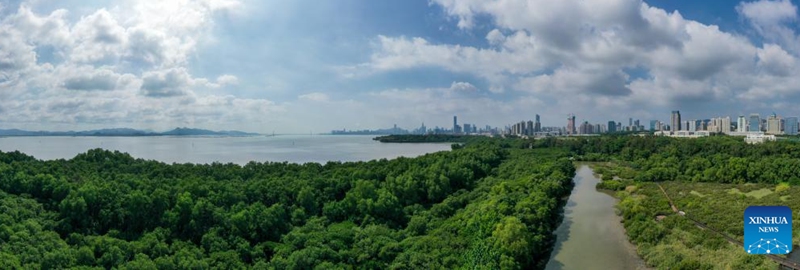
This aerial photo taken on Nov. 11, 2022 shows a mangrove wetland in the Guangdong Neilingding-Futian National Nature Reserve in Shenzhen, south China's Guangdong Province. (Xinhua/Liang Xu)
Over 100 black-faced spoonbills flew to a mangrove wetland in Shenzhen, south China's Guangdong Province, last month. The birds were seen cleaning their feathers and foraging for food in a fishpond in the wetland.
The birds were observed through a high-definition lens by staff at the Guangdong Neilingding-Futian National Nature Reserve near Shenzhen Bay in late October.
"I didn't expect that more than 100 of them would gather here in just a few days," said Yang Qiong, head of the reserve's research office, adding that about 10,000 migratory birds had already flown to Shenzhen to overwinter.
On November 5, during the 14th Meeting of the Conference of the Contracting Parties to the Ramsar Convention on Wetlands in China's Wuhan and Switzerland's Geneva, China said that it will promote international exchanges and cooperation to protect the four bird migration routes passing through China and build an international mangrove center in Shenzhen.
People in this city of scientific and technological innovation are deeply in awe of nature, cherishing and carefully protecting its mangrove wetlands and maintaining international migration routes for migratory birds.
The black-faced spoonbill is one of the rarest birds in the world and has a narrow distribution area. According to the census data of the Hong Kong Bird Watching Society, a total of 3,941 black-faced spoonbills were recorded worldwide in 2017, of which 375 spent their winter in Shenzhen Bay.
In recent years, Shenzhen has been doubling its efforts to explore ways to achieve balance between environmental protection and economic development.
According to the municipal planning and natural resources bureau, the city has carried out various wetland resources protection strategies and refined the wetland classification protection system in accordance with Wetlands Conservation Law and the regulations of Guangdong Province governing wetland protection. By the end of October this year, the city had officially listed 15 wetland parks, including one of national importance.
The municipal government has curbed disorderly expansion and over-exploitation by delineating ecological red lines. The ecological restoration of the protected areas has been carried out by means of not discharging sewage into the sea, by returning silt to the lake and replanting mangroves.
Among the black-faced spoonbills, Yang again encountered an old friend who has been seen in Shenzhen Bay for three consecutive years. "It wears a bird ring marked K34 on its feet, indicating that it is from the Republic of Korea," Yang said.
At present, more than 100,000 migratory birds stop over in Shenzhen Bay every winter. Shenzhen is not the only city that protects wetlands and preserves an international channel for migratory birds. Black-faced spoonbills have also been observed in the wetlands in east China's Zhejiang and Fujian provinces and south China's Guangxi and Hainan.
"This bird is an indicator of the health of the ecological environment. It mostly feeds on unpolluted small fish, shrimps and crabs. The increase in its population is a proof of the improvement of China's ecological environment," said Zhang Gaofeng, deputy secretary-general of the Shenzhen Bird Watching Society.
The establishment of the international mangrove center means Shenzhen will shoulder more responsibility for international exchanges and cooperation, and become an important base for global mangrove protection and international cooperation, according to the municipal planning and natural resources bureau.
The Shenzhen Wetland Protection Plan (2021-2035) is currently being compiled. It aims to explore a wetland protection form suitable to Shenzhen as an international metropolis, and improve protection of important coastal wetland areas such as Shenzhen Bay, Daya Bay and the Pearl River estuary.
According to the plan, by 2035, Shenzhen will strive to achieve a 50 percent wetland protection rate, maintain a stable wetland area, effectively improve the ecological status of coastal wetlands, optimize the quality of wetland ecological space in built-up areas, and build itself into an international wetland city.

Birds fly over the a mangrove wetland in the Guangdong Neilingding-Futian National Nature Reserve in Shenzhen, south China's Guangdong Province, Nov. 11, 2022. (Xinhua/Liang Xu)

Ducks are seen at a mangrove wetland in the Guangdong Neilingding-Futian National Nature Reserve in Shenzhen, south China's Guangdong Province, Nov. 11, 2022. (Xinhua/Liang Xu)
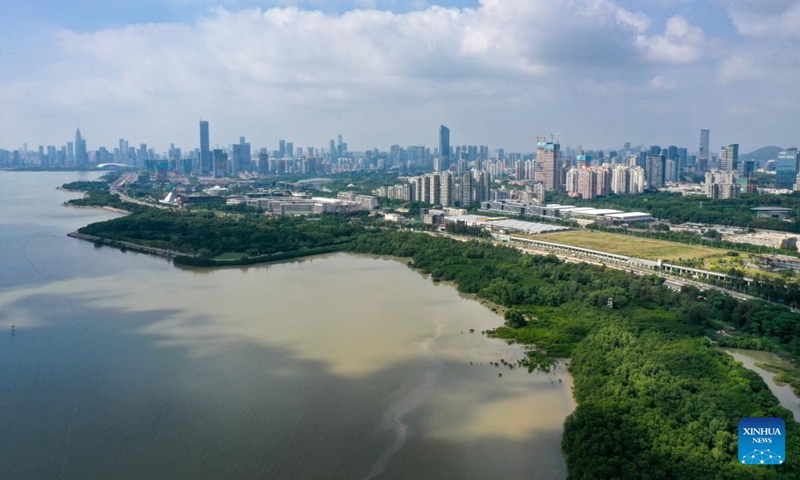
This aerial photo taken on Nov. 11, 2022 shows a mangrove forest along the coastal area of the Shenzhen Bay in Shenzhen, south China's Guangdong Province. (Xinhua/Liang Xu)
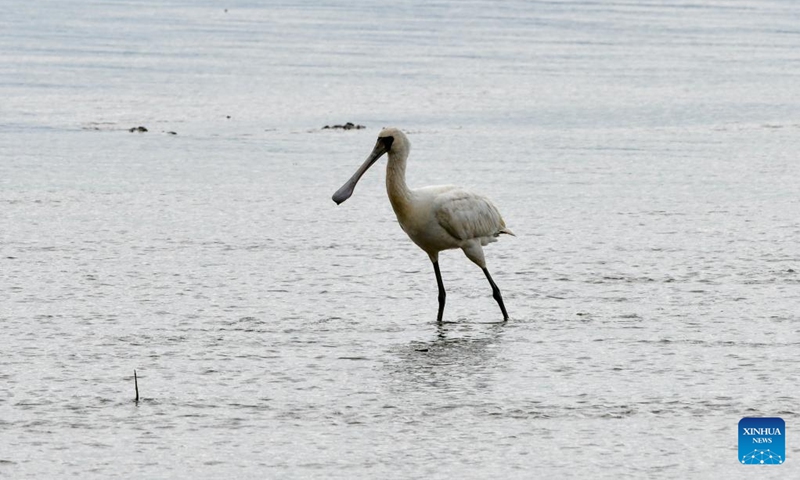
A black-faced spoonbill forages at a mangrove wetland in the Guangdong Neilingding-Futian National Nature Reserve in Shenzhen, south China's Guangdong Province, Nov. 11, 2022. (Xinhua/Liang Xu)
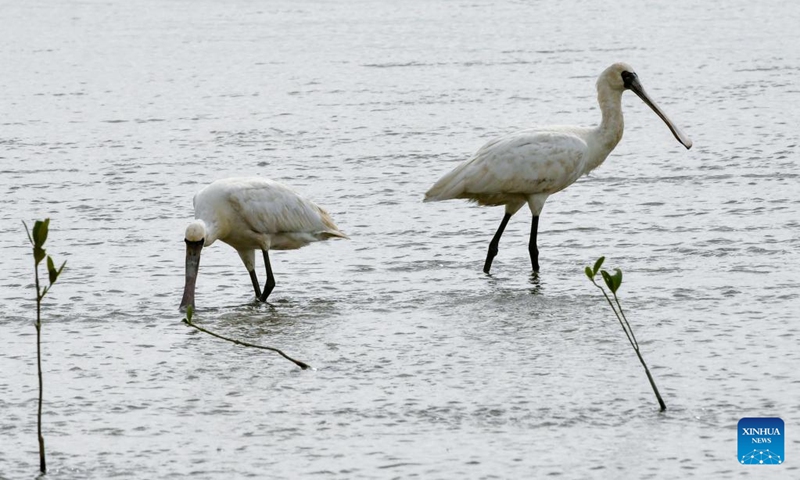
Black-faced spoonbills forage at a mangrove wetland in the Guangdong Neilingding-Futian National Nature Reserve in Shenzhen, south China's Guangdong Province, Nov. 11, 2022. (Xinhua/Liang Xu)
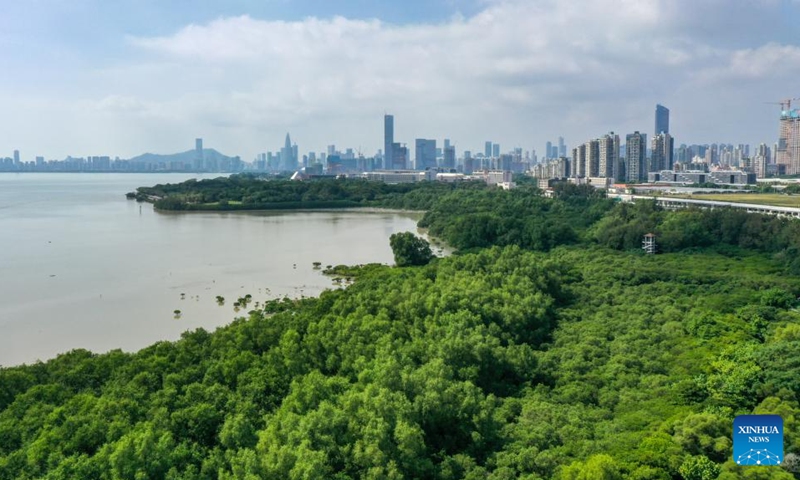
This aerial photo taken on Nov. 11, 2022 shows a mangrove forest along the coastal areas of the Shenzhen Bay in Shenzhen, south China's Guangdong Province. (Xinhua/Liang Xu)
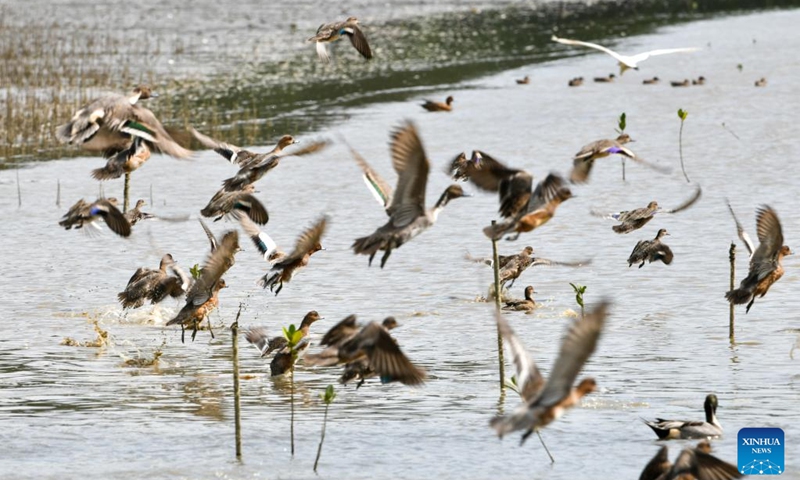
Wild ducks are seen at a mangrove wetland in the Guangdong Neilingding-Futian National Nature Reserve in Shenzhen, south China's Guangdong Province, Nov. 11, 2022. (Xinhua/Liang Xu)

Migratory birds are seen at a mangrove wetland in the Guangdong Neilingding-Futian National Nature Reserve in Shenzhen, south China's Guangdong Province, Nov. 11, 2022. (Xinhua/Liang Xu)
